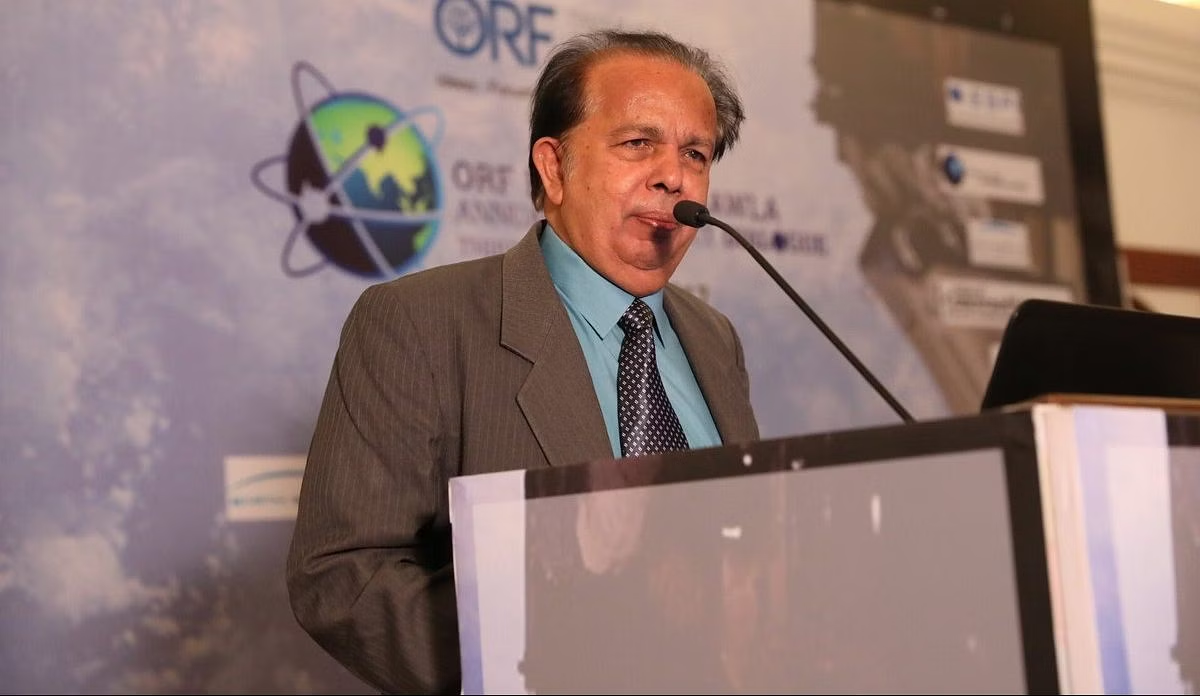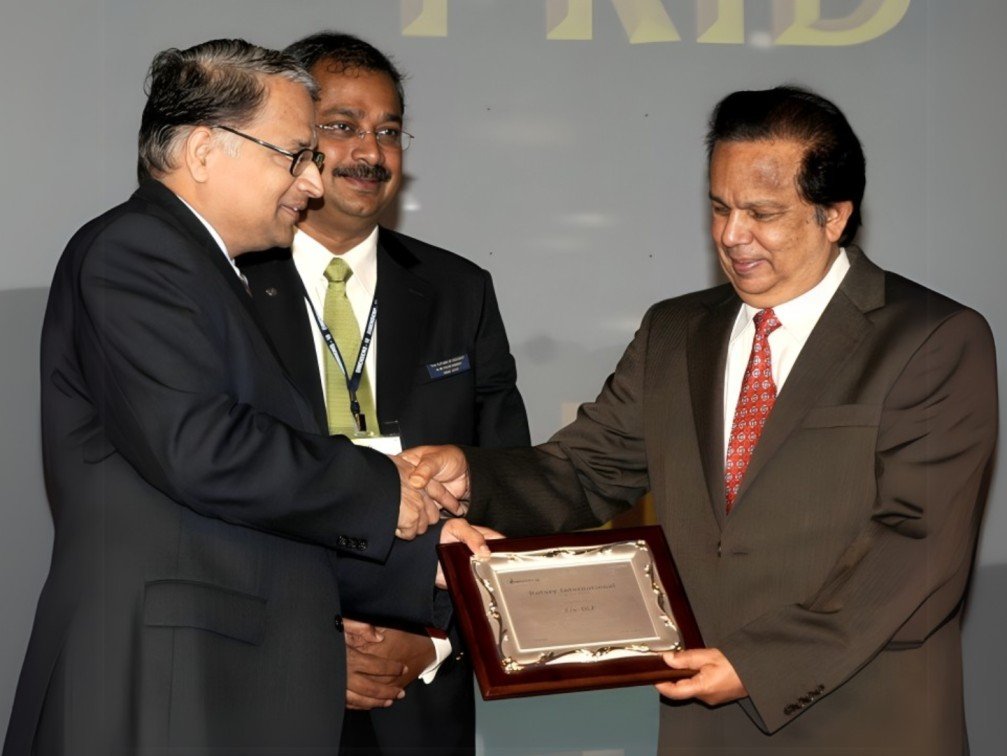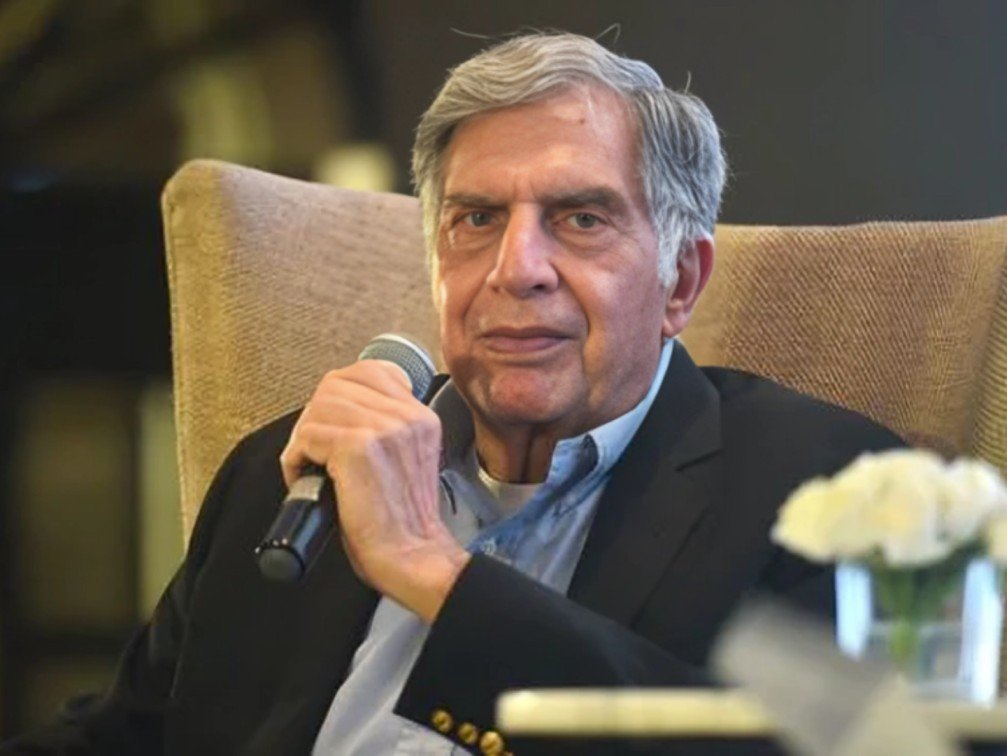Dr. G. Madhavan Nair is one of the most significant leaders in the story of India’s space program that led ISRO successfully to a new phase of international reputation and indigenous technological competence. He has delivered remarkable strategic reform initiatives, such as launching the first Indian lunar mission – Chandrayaan-1 that found water on the moon. It has been a pleasure for a generation to have Dr. Nair and learn from him and feel motivated that there is more to look forward to even when we look at the stars.

The life of Dr. G.Madhavan Nair is a saga of hard work and achievements in the filed of Space Science. Be it the Satellite Launch Vehicle (SLV) which remained his maiden assignment or empowering India’s heaviest Polar Satellite Launch Vehicle (PSLV) and Geosynchronous Satellite Launch Vehicle (GSLV), the task with which Sivan has been associated has put India on the global space map. In his capacity as the Chairman of ISRO, just to mention but a few, he has managed to undertake many missions, which placed India on the world map of lunar exploration through the Chandrayaan-1. Dr. …..Nair went beyond simply achieving successful launches and lunar missions; he played a leading role in promoting satellite-oriented education, distance medicine, and disaster management, among others, making space technology a major instrumental for national growth. His work remains radical and proves an inspiring example of the formula for change and advancement of science and technology in society.
Early Life and Education
Dr. G. Madhavan Nair was born on 31st October 1943 in Kulasekharam in the erstwhile princely state of Travancore now combined into Kanyakumari District of Tamil Nadu. Since childhood, Nair has been interested in science as he grew up in a financially limited family. Kerala is where his preliminary education was recorded, and he developed a curiosity to learn, his interest in space and engineering started in school.
Nair continued his education up to the degree level and received a Bachelor’s Degree in Engineering in the specialty of Electronics and Communication at the University of Kerala in 1966. Aspired to increase his technical competencies he joined a premier training course in Bhabha Atomic Research Center (BARC), Mumbai. In this program, he acquired the essential knowledge that would take him in his space career from the point of a major utility in nuclear science and engineering.
Early Career at ISRO
Nair joined in Thumba Equatorial Rocket Launching Station (TERLS) in 1967 with promise scientist Dr.Vikram Sarabhai, who is referred as father of ISRO. In his early career, got busy in the rocket propulsion systems and contributed much to the motor section of rocket particularly solid-propellant motors.
One of the biggest milestones meant to be highlighted is her contributions to India’s first Satellite Launch Vehicle (SLV-3) project. He also helped created SLV-3 through which the Rohini Satellite RS-1 was successfully launched into orbitals in July 1980 making India as a space sharing nation in the world. This project was extremely important for ISRO which was earlier completely dependent on foreign support to launch satellites.
Key Contributions and Technical Milestones
Polar Satellite Launch Vehicle (PSLV) In additional to these, Nair undertook leadership positions where he had the responsibility of defining some of the most memorable missions of ISRO. While working as the Project Director of PSLV, he made great efforts to make the PSLV as a highly reliable launch vehicle for satellites. However, over the years the PSLV got involved not only in launching Indian satellites, but also a host of foreign satellites that made India a credible space launch vehicle provider.
During Nair’s tenure, PSLV made a record high in launching satellites into sun-synchronous orbits necessary for observation of earth and communication. It had much impact in weather prediction, disasters and disasters management, and in communication systems.
Geosynchronous Satellite Launch Vehicle (GSLV) He also led the part in the building of the Geosynchronous Satellite Launch Vehicle (GSLV), more specifically, he guided the incorporation of indigenous cryogenic engine into the final product. Cryogenic propulsion system is important in putting heavier payloads into geosynchronous orbits, which are useful in communication and weather satellites. Despite technical problems, Nair reiterated they nailed this complex technology in India owing to leadership.
Director of the Liquid Propulsion Systems Centre Between 1995 and 1999, Nair was the Director of the Indian Space Research Organisation’s Liquid Propulsion Systems Centre (LPSC). During his term, solid and liquid propulsion technology was progressed which was useful for future PSLV and GSLV projects. He also guided the creation of bipropellant engines and thrusters that increase the accuracy of the satellite launches as well as the flexibility of a mission.
Chairman of ISRO (2003–2009) Appointed as Chairman of ISRO in 2003, Dr. G. Madhavan Nair’s leadership heralded a new era for India’s space program. During his six-year tenure, he oversaw 27 successful space missions and implemented key programs that expanded India’s space capabilities. Some of the highlights include:
Chandrayaan-1 The most visible accomplishment may go down to the 2008, when, under his stewardship, India launched its first lunar mission, Chandrayaan-1. Chandrayaan-1 mission was a landmark event that put India into a comity of nations in space exploration. This mission brought the discovery of water molecules on the moon into focus, changing the knowledge man had about the moon and how useful it was for extra exploration.
Navigation, Communication, and Remote Sensing
Nair’s term as the chairman of ISRO saw the organisation put into orbit several additional satellites extending India’s capacity of remote sensing, Earth observation, communication, and meteorological forecasting. They served an important function in situations such as natural disasters, in agricultural policies and even planning for urbanisation.
He has also further empowered the satellite-based education and telemedicine outreach, an innovative use of space technology which has helped bring additional services to remote centers in the country. For instance, the EDUSAT satellite transformed education by sending lessons to students who would otherwise could hardly be reached.
International Collaborations
Nair also helped in developing international, commercial satellite-launching capability for countries across Europe, Asia and in North America. During his directorship of ISRO, it began attracting clients who wanted an affordable and reliable means of orbiting satellites.

Recognitions and Awards
Dr. G. Madhavan Nair has been honored with a range of prestigious awards for his groundbreaking contributions to science and space exploration. Among his most notable accolades are India’s highest civilian awards, the Padma Bhushan and Padma Vibhushan, which recognize his exceptional service to the nation. Additionally, he has received numerous other national and international awards, each underscoring his role in advancing India’s space technology and promoting scientific progress.
List of Awards
| Year | Award/Honor | Description |
| 1994 | FIE Foundation Award | Recognized for significant contributions to engineering and technology. |
| 1995 | Shri Om Prakash Bhasin Award | Awarded for excellence in the field of space and aerospace sciences. |
| 1995 | Swadeshi Sastra Puraskar Award | Honored for promoting indigenous science and technology. |
| 1998 | Padma Bhushan | India’s third-highest civilian award, acknowledging distinguished service of a high order. |
| 2003 | Vikram Sarabhai Memorial Gold Medal | Presented by the Indian Science Congress Association for outstanding contributions to space research. |
| 2009 | Padma Vibhushan | India’s second-highest civilian award, recognizing exceptional and distinguished service. |
| 2009 | CNN-IBN Indian of the Year in Public Service | Acknowledged for significant contributions to public service through space technology. |
| 2010 | Honorary Doctorate from Indian Institute of Technology, Kharagpur | Conferred for exceptional contributions to science and engineering. |
| 2010 | Honorary Doctorate from Indian Institute of Technology, Mumbai | Recognized for outstanding achievements in space technology. |
| 2010 | Honorary Doctorate from North Eastern Hill University, Shillong | Honored for significant contributions to science and technology. |
Autobiography and Reflections
In his professional front, Nair in the same year came out with his life story published as “Agnipareekshakal.” The English translation, “Rocketing Through the Skies: Entitled ‘An Eventful Life at ISRO’, a documentary which came out in 2023, gives streams of the globe glimpses of his achievements, failures and what he underwent in his life.
As narrated by Dr Nair in this autobiography, the early formation of ISRO, about the contribution of Dr.Nair for Indian space program and his visions for future of space technology.
Post-ISRO Life and Legacy
After retiring from the Indian Space Research Organisation, or ISRO, Dr Nair remains a leading aural and written contributor to space investigation and technology advancement. He also encourages partnership between governments and private corporations in space exploration and often appeared before the media to discuss topics on India’s future in space, utilization of satellites, satellite technology and space regulation.
From the management, leadership and participation of Dr. Nair the space program of India has been elevated to one of the most respected in the world. The emphases he laid on indigenous technologies, economical solutions and social utilization of space technology has enabled India to create eminent position in space orbiting and is offering affordable space access for the needy nations across the world.
Stay tuned to inspire4ward for more updates.



